

Emergency Transport Simulation on a Remote Island Without an Ambulance
On November 13, 2025, Nagasaki University conducted an emergency transport simulation on Hisaka Island in Goto City, Nagasaki Prefecture, Japan, in collaboration with the Hisaka Clinic, the Goto City Fire Department, and the Goto City Municipal Office. Local residents also participated in the activity.
The simulation was organized by the Department of Island and Community Medicine, Nagasaki University Graduate School of Biomedical Sciences.
Hisaka Island lacks a medical facility capable of providing advanced treatment. Consequently, residents experiencing severe sudden illnesses must be transported multiple times a year by sea taxi to Fukue Island, where proper medical care is available. Additionally, since the island has no ambulance service, residents often assist with transporting patients within the island.
To review the entire process leading up to emergency sea transport and identify challenges and areas for improvement, we created a simulation based on a scenario where an island resident suddenly fell ill.
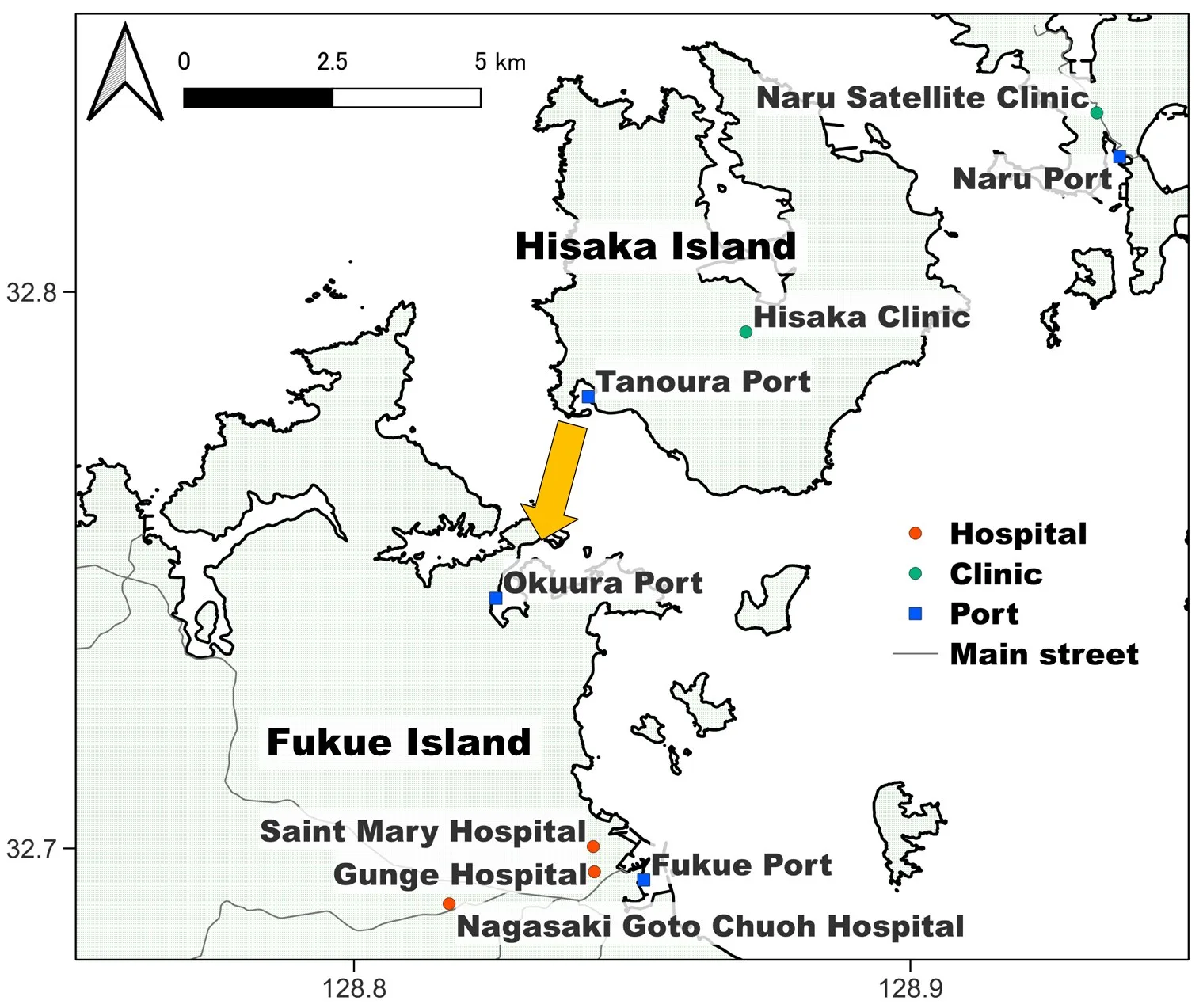
In the simulation scenario, a resident found a patient (a training manikin) collapsed indoors and contacted the Hisaka Clinic. A physician visited the patient’s home, assessed the situation, and arranged for hospital acceptance and sea transport. Together with residents who arrived to help, the team moved the patient using a stretcher.

Physician visiting the patient’s home and making phone arrangements for transport
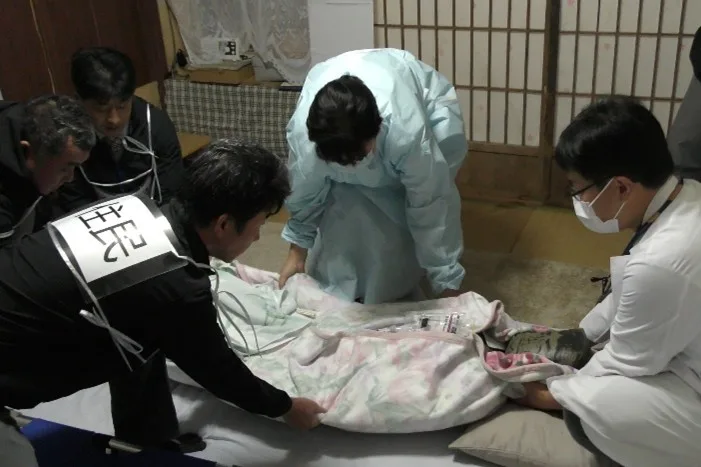
Transferring the patient onto a stretcher

Carrying the patient out of the house

Loading the patient into the vehicle
After arriving at Tanoura Port on Hisaka Island, the patient was transferred onto a sea taxi and taken to Okuura Port on Fukue Island, where the patient was handed over to emergency medical services.
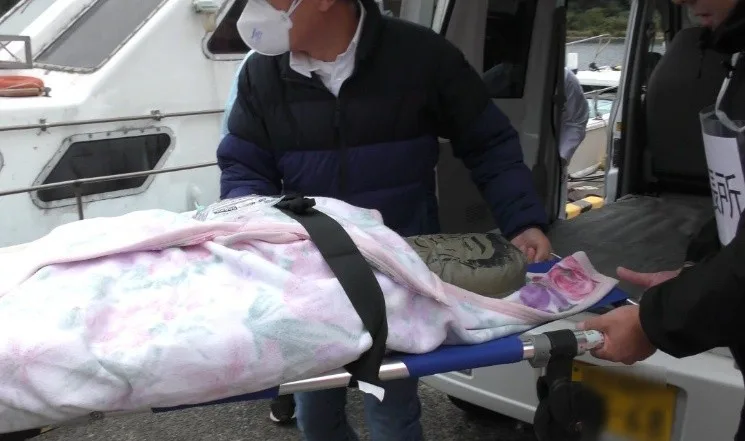
Arriving at Tanoura Port on Hisaka Island
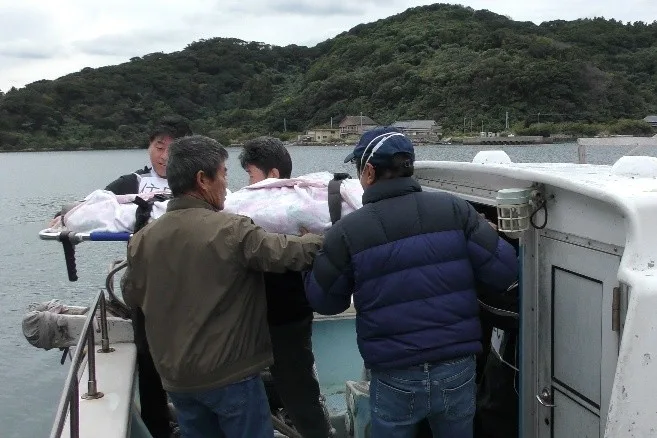
Loading the patient onto the sea taxi
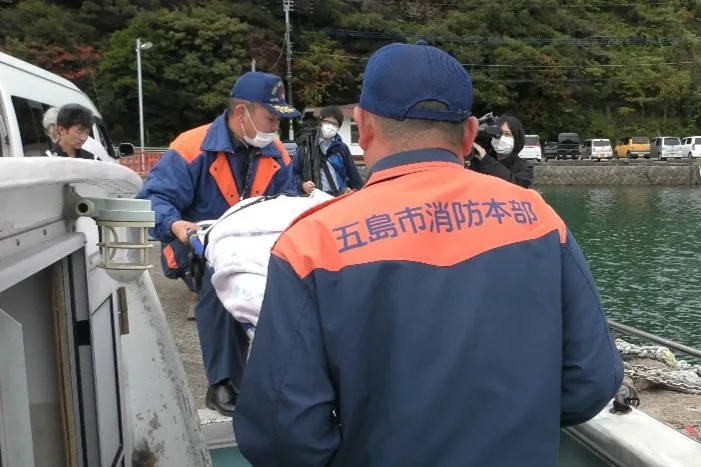
Arriving at Okuura Port on Fukue Island and handing over to the emergency medical service
After the simulation, participants gathered at the Hisaka Clinic for a debriefing session. They discussed the burdens placed on residents who assist with patient transport on the island, as well as challenges like the shortage of sea taxi operators and the potential discontinuation of services.
Based on the results from this simulation, we will continue our research to improve emergency medical care in remote island communities.
We sincerely thank the island resident who allowed us to use her home for the simulation and everyone who participated in this activity. We also appreciate the staff of the Hisaka Clinic, the Goto City Fire Department, and the Goto City Municipal Office for their cooperation, as well as the Goto Nagasaki Prefectural Public Health Centre and the media for attending.
This simulation was funded by a grant from the 38th Research on Community Health and Medicine of the Japan Association for Development of Community Medicine.
Jun Miyata, M.D., Ph.D.
Assistant Professor
Department of Island and Community Medicine
Nagasaki University Graduate School of Biomedical Sciences